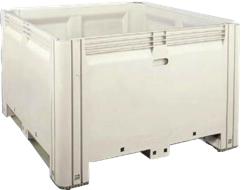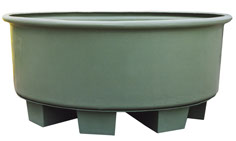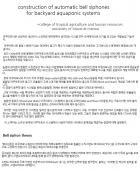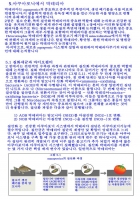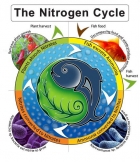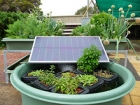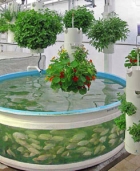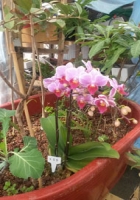|
|
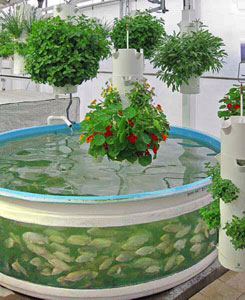 아쿠아포닉 구성요소 수조(fish tank) *본 게재물은 저작권이 있으니, 복사및 배포를 금지합니다.* 아쿠아포닉의 구성요소는 수조,화단,펌프,사이폰시스템,화단구성물,식물,고기,물,그리고 구성요소를 연결해주는 배관설비가 주요요소이다. 아쿠아포닉의 방식은 뒤에 살펴보기로 하고 각각의 구성요소를 살펴 보겠다. 1.수조(fish tanks): 고기와물을 담은 그릇이다, 아래사진과 같이그크기, 재질,디자인은 장소및 운영주체의 기호에 따라 달라진다, 이러한 인공재료외에 연못(pond)을 수조로 하는 pond aquaponics 도 있다. 수조는 선택할때, 견고성과 경제성,디자인에 따라 천차만별이며, 나무재료로 그위치에 맞게 제작하는수조도 있다 . 필자가 사용하는 수조를 살펴보면, 특히 경제성을 고려한것이다.  농장이나, 대규모 상업용 아쿠아포닉에서는 규모에 맞는 수조를 제작하거나 주문발주하여 사용한다. 위의 사진은 도시나 소규모시설에 적합하며 저렴하다. 수조와 화단의 크기를 결정할때는 수조크기의 약 3배까지 화단을 수용할수 있으므로 이를 고려하여, 구비하면된다.  외국의 여러가지수조사진을 살펴보면 아래사진과 같다.    *아래글은 일본 아쿠아포닉 사이트에서의 수조에 관항 조언 입니다. 참고하세요.http://www.japan-aquaponics.com/fish-tank-guide.html Aquaponics fish tanks will be one of the first components of aquaponics systems that you are likely to consider, and in many ways we will follow similar guidelines to the ones we follow for growbed considerations. The fish tank (the aquaculture part of our system) holds the fish, a crucial part of your system and so you should choose one carefully and with an emphasis on safety, water quality, strength and long term usability. 아쿠아포닉 물고기 탱크(수조)는 당신이 고려해야 할 aquaponics 시스템의 첫 번째 구성 요소 중 하나가 될 것입니다, 그리고 여러 가지면에서 화단( growbed) 고려 사항에 따라 유사한 지침을 따르게 됩니다.
If outside it will be subject to environmental conditions and so it should be able to withstand direct sunlight and temperature variations without cracking, warping or leaching chemicals into the water. Your fish tank is likely to be one of the most expensive components of your system but it is worthwhile focusing on quality and safety and purchasing a fish tank that will provide a stable, safe environment for the fish. 외부환경이 조건의 대상이 될 것이다. 그래서, 균열 휨 또는 물에 화학 물질이 침출하지 않고 직사광선 및 온도 변화에 견딜 수 있어야한다. A rounded shape also allows for much easier water circulation and flow in the fish tanks, and this has several distinct benefits for water quality and fish health: 둥근 형상도 어항에서 훨씬 더 쉽게 물 순환 흐름을 허용하고,이 수질 어류 상태에 대한 몇 가지 뚜렷한 장점이있다 • A good flow of water provides the fish with a current to swim against, which increases their health and the quality of their flesh if the fish are for consumption. • The fish also seem to naturally enjoy playing in currents or waterfalls of water. • In a rounded tank, solid waste will often gravitate toward the bottom centre of the tank - strategic placement of your pump will pick up almost all of the solid waste quickly. Square or rectangular fish tanks are also very common and can be useful if you are working in a confined space, be it indoors or outside. Care should be taken to ensure adequate water flow, and ideally if these tanks have rounded corners it will assist in the water movement. IBC (International Bulk Carrier) totes, or high quality, food grade bulk shipping containers such as Macrobins are commonly used square aquaponics fish tanks. Fish Tank Materials Fish tanks are most commonly made from a food-grade plastic material, regardless of their size and shape. Such tanks are generally the most cost effective and are readily available across the world, from a wide variety of sources like Homestores, DIY stores, Aquaculture outlets and so forth. If you are re-purposing a tank that has an alternative main function, care should be taken to ensure that it is made from a material that will not compromise water quality and is safe to be used for fish, and in a system, which will provide food for human consumption. In all cases the fish tank should be made of an opaque material that is UV resistant and which blocks sunlight as direct sunlight will encourage algae growth which is generally detrimental to your system (primarily because algae is a prolific grower that also need oxygen to multiply and so depletes your system of the available oxygen needed by your fish, bacteria, and plants) Smaller systems can use standard glass aquariums, but again, care should be taken not to keep the tank in direct sunlight. Backyard aquaponics enthusiasts may choose to make a fish tank either from concrete, or out of a wooden structure then covered with a food-grade liner. Concrete needs to be handled carefully as it can seriously affect your water composition causing imbalances in your pH. If concrete is used it should be sealed with a food safe commercially available sealant. Wooden tanks (or any other type of material for that matter) can also be built and then lined with a commercially available liner to make it waterproof. With these fish tanks you need to be careful that the tank will be structurally strong enough to withstand the pressures and stresses of the water that they will be holding. Ponds can also be used in an aquaponics set-up, although care should be taken as an outside pond may contain and spread undesirable bacteria or insects through your system and again, compromise the water quality of your system. Some permaculture experts have also successfully converted swimming pools to self-sustaining aquaponics systems - the excellent work of Geoff Lawson is well worth looking at in this respect. Fish Tank Size Aquaponics is an integrated symbiosis of fish, bacteria and plants, and so when considering fish tank size you have to take into consideration the size of your entire system. Your growbed (or growbeds) need to be able to perform various levels of filtration on the water and waste coming fro the fish tank, and so it would be no good having an enormous fish tank with lots of fish, if you are using a tiny growbed. As with most things in aquaponics we are striving to design and build a balanced system. As a general rule of thumb your growbed volume (in a media based growbed system) and your fish tank volume should be at least equal, with preference being for a slightly larger growbed volume. This simple rule will usually ensure that you have sufficient biological filtration, mechanical filtration and mineralisation capacity for your fish tank. Conclusion In summary, your fish tank choice will be influenced by space, environmental and size considerations. There are a huge variety of choices and it can be bewildering at first, but if you focus on safety and water quality then you cannot go far wrong. Providing your fish with a tank that meets their needs will ensure healthy and happy fish who will power your aquaponics system for years to come. Ensure the size of the fish tank is suitable for the size of your growbed space and your fish, bacteria, plants... and you, will be able to live harmoniously together. by Aragon St-Charles
|








| 
|

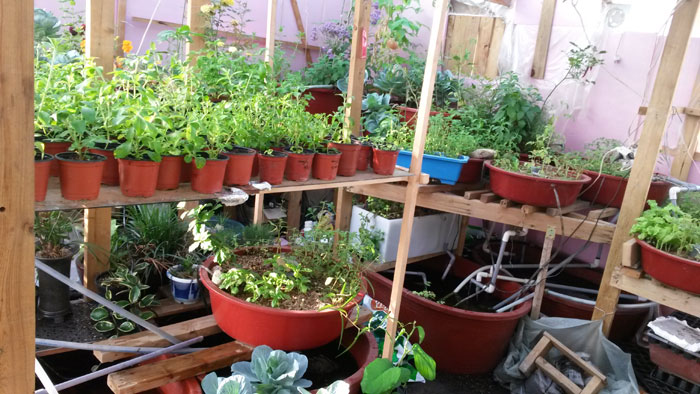
 아쿠아포닉 메뉴얼-1
아쿠아포닉 메뉴얼-1





 전체글 보기
전체글 보기 
 전체글 보기
전체글 보기






 s2.jpg
s2.jpg

